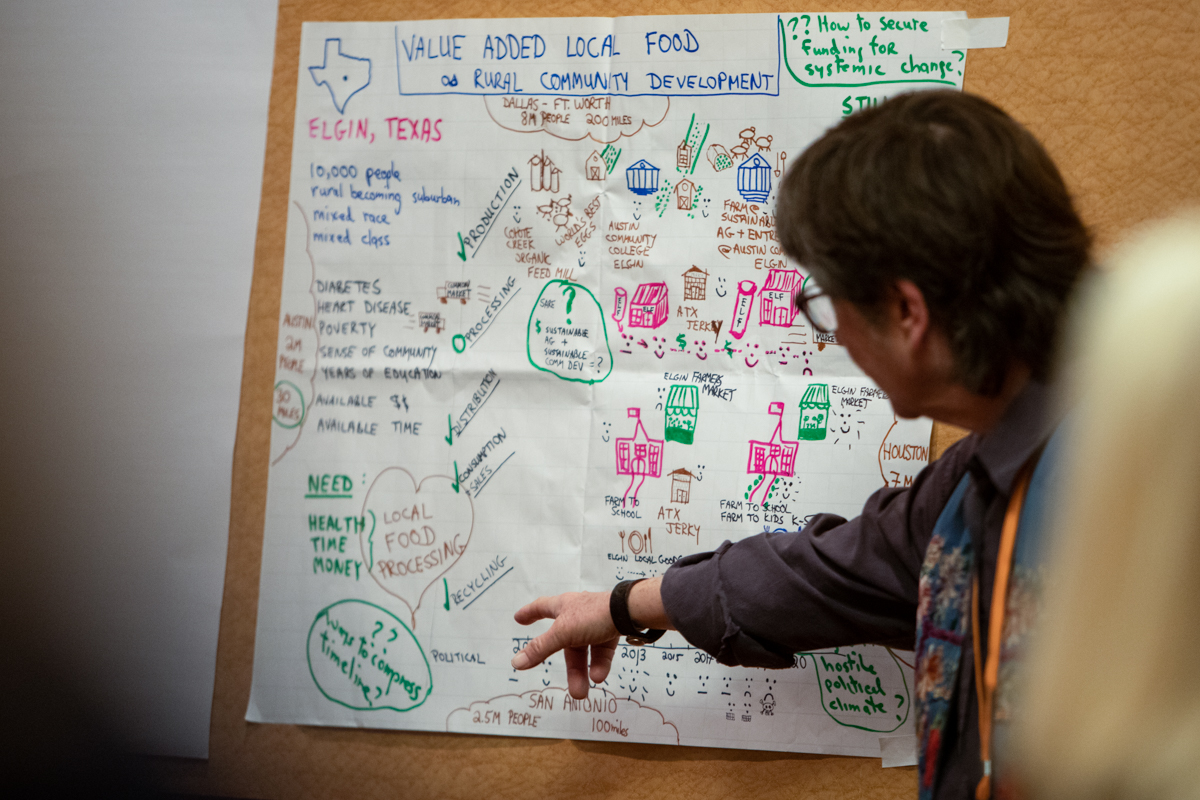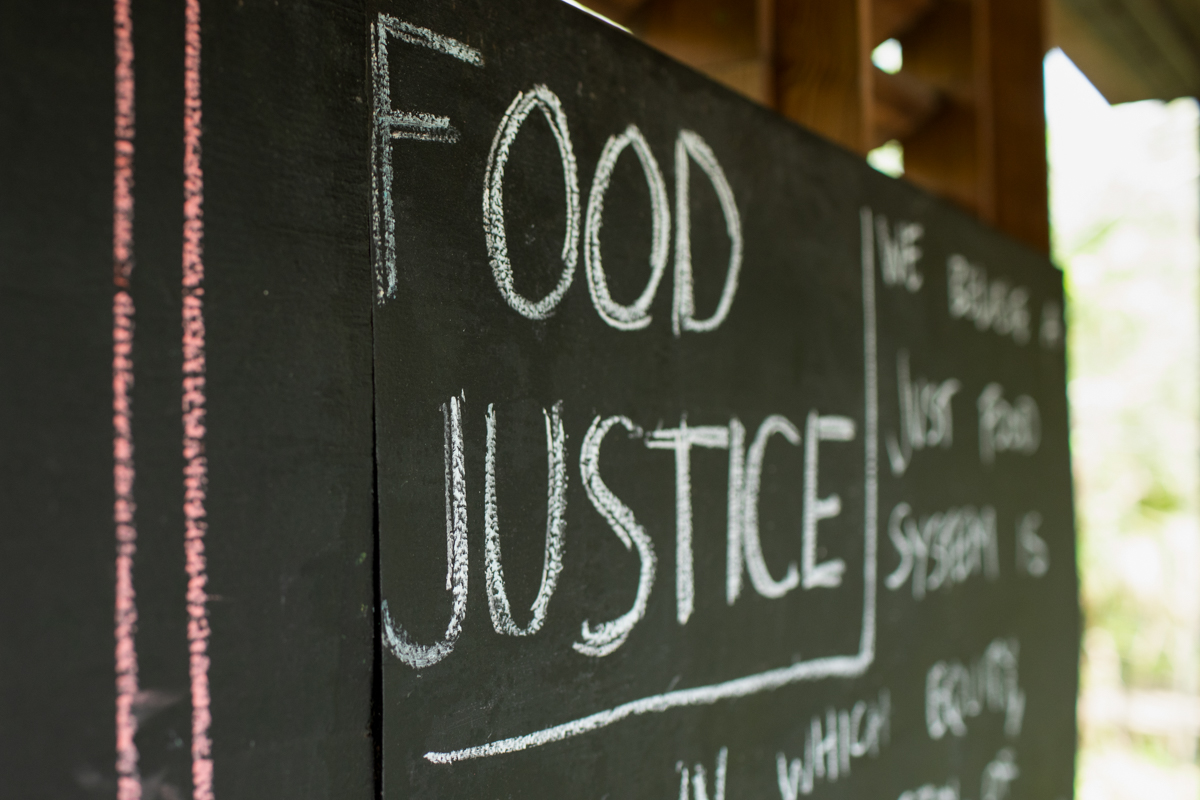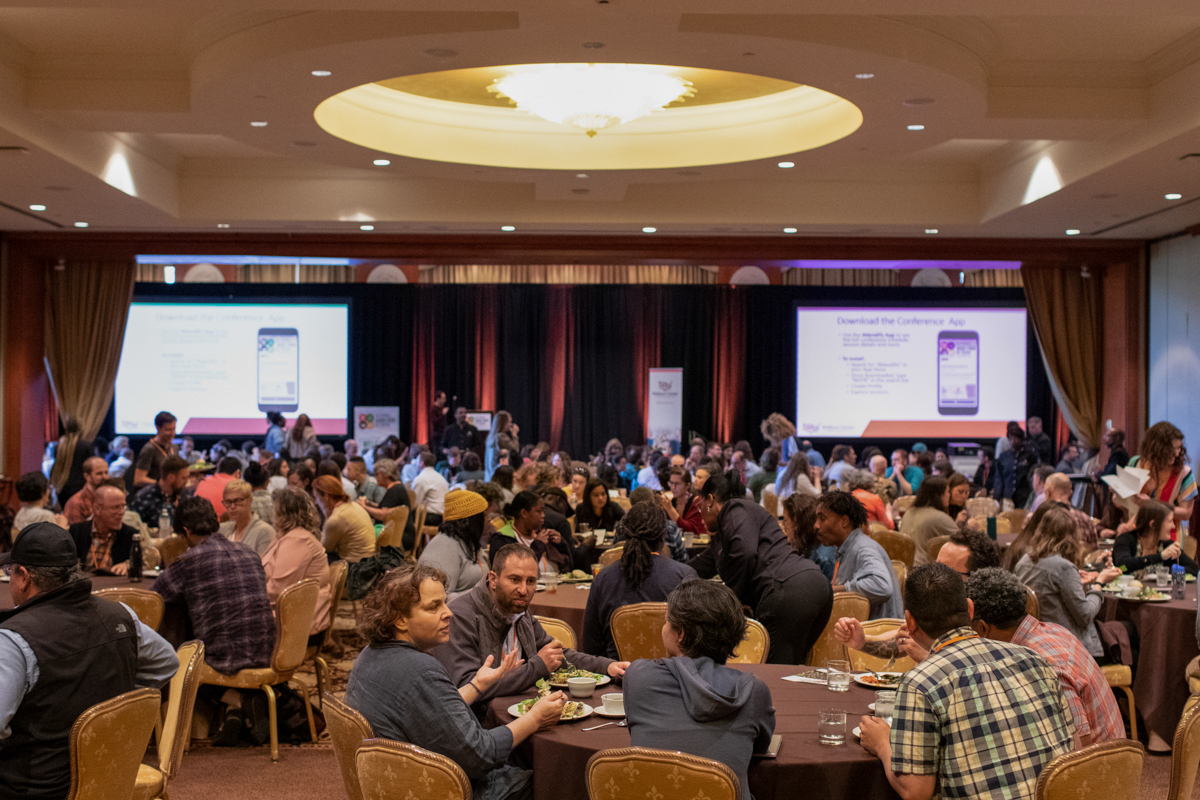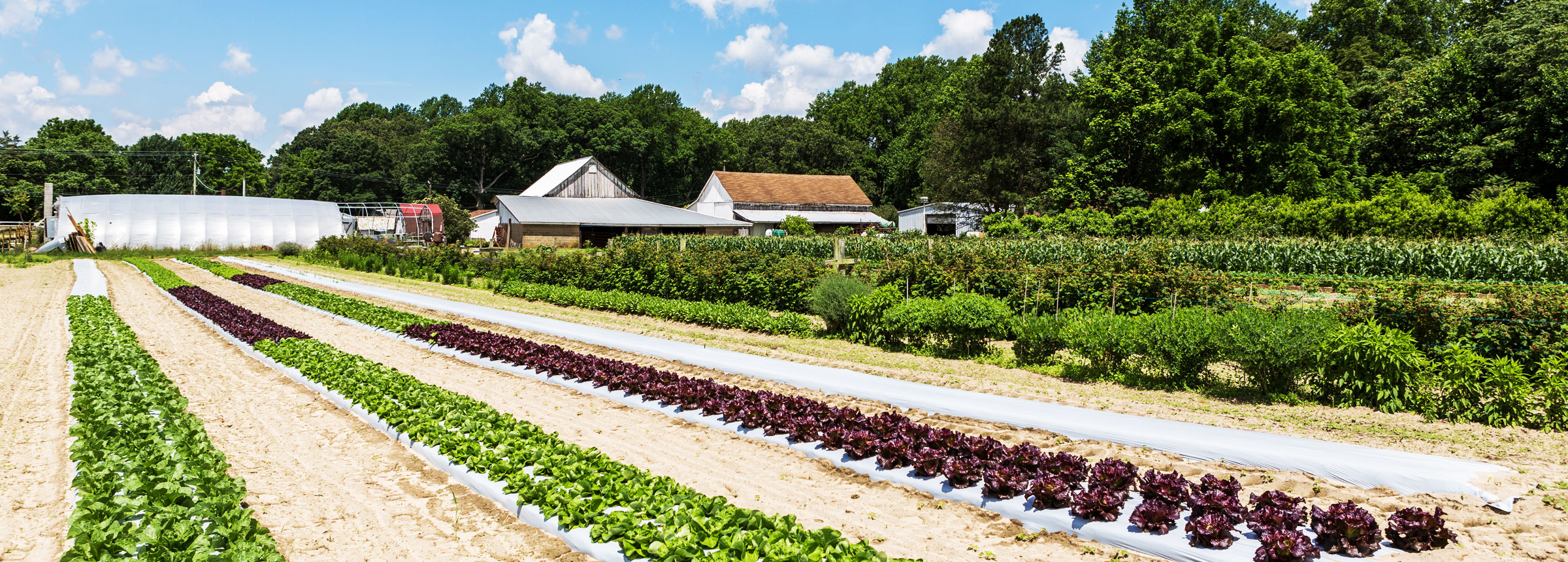
A More Just Vision
Collaborating on the Future of Good Food
By John Fisk, Wallace Center
 If you have ever been part of designing and implementing a large event you will recognize the need to start well in advance. In our case we started planning the Wallace Center’s fifth National Good Food Network (NGFN) conference — an important biannual networking and programming event — 18 months ahead of time. We lined up over 40 breakout sessions, five plenaries with 20 panelists, 10 pre-conference trainings and local site visits — and we registered almost 500 people for the event, which was held in New Orleans March 10 – 13. Little did we know that our timeline was to intersect with that of COVID-19.
If you have ever been part of designing and implementing a large event you will recognize the need to start well in advance. In our case we started planning the Wallace Center’s fifth National Good Food Network (NGFN) conference — an important biannual networking and programming event — 18 months ahead of time. We lined up over 40 breakout sessions, five plenaries with 20 panelists, 10 pre-conference trainings and local site visits — and we registered almost 500 people for the event, which was held in New Orleans March 10 – 13. Little did we know that our timeline was to intersect with that of COVID-19.
Perhaps prophetically, we designed NGFN 2020 to recognize that we are at a pivotal moment in food systems change; that after years of seeking to shift the food system to be more healthy, green and equitable, those of us involved in this work would be well served to take stock of where we have made progress and where haven’t, examine what is working and what is not, and honestly look at who is being left out. Despite our collective years of work and the gains we have made, there is still a long way to go, which calls on us to be more strategic, collaborative and collective in our approach. Our stated theme and guiding light was “A More Just Vision: Collaborating on the Future of Good Food.” Now that we are weeks into this global pandemic, it’s clear that we are indeed at a pivotal moment in how we feed ourselves — and a more just vision is what we desperately need.
 While in New Orleans for NGFN 2020, we felt the tremors of how business as usual was quickly changing. Although there was no quarantine at the time, dozens of speakers and many funders and public sector allies were grounded with non-essential travel bans. Members of USDA’s Agricultural Marketing Service, a leading conference sponsor, were encouraged not to travel, yet they showed up in force and told participants that the work we were doing together at the conference was “mission critical” and they needed to be there. Those who manage regional food hubs and processing centers, especially those with significant sales to schools, universities and other food service accounts, had begun to receive notice of canceled orders. They were tasked with calling their farmers to inform them of these disruptions and working with them to find alternative markets. They had to grapple with the overnight loss of 30 to 50 percent of sales and its effect on employees, suppliers and community.
While in New Orleans for NGFN 2020, we felt the tremors of how business as usual was quickly changing. Although there was no quarantine at the time, dozens of speakers and many funders and public sector allies were grounded with non-essential travel bans. Members of USDA’s Agricultural Marketing Service, a leading conference sponsor, were encouraged not to travel, yet they showed up in force and told participants that the work we were doing together at the conference was “mission critical” and they needed to be there. Those who manage regional food hubs and processing centers, especially those with significant sales to schools, universities and other food service accounts, had begun to receive notice of canceled orders. They were tasked with calling their farmers to inform them of these disruptions and working with them to find alternative markets. They had to grapple with the overnight loss of 30 to 50 percent of sales and its effect on employees, suppliers and community.
During the conference, over 50 participants swiftly convened in an emergency session to try to make sense of this in real time, to help each other think through how to respond back home and how to catalyze action. The group drafted a call to action to government, philanthropy, companies and others to quickly address the needs of households, farmers, farm workers and small food businesses. Following the conference, the Wallace Center created a COVID-19 Response Group Listserv, which is connecting over 700 food and farm advocates and conference participants to identify and share innovations and needs as everyone quickly transitions to a new reality.
 Currently we are seeing a tremendous amount of innovation and leadership among good food value chain organizations. For example, the Common Market in Philadelphia, which lost a large part of their sales as schools and universities closed, is now adding to their employee roster after being contracted by the City of New York to pack and deliver 3,000 boxes a day of regionally sourced foods for emergency relief. 4P Foods in Virginia has stepped into a regional coordination role utilizing the knowledge and infrastructure of 14 food hubs up and down the East Coast to address food insecurity while steering philanthropic funds into local procurement by connecting farmers to food access points and markets. In New Orleans, a diverse group of leading food systems organizations including Market Umbrella, Recirculating Farms Coalition, SPROUT NOLA, Liberty’s Kitchen and the New Orleans Food Policy Advisory Committee teamed up with community-based distributor Top Box Foods Louisiana to rapidly co-create a multi-farm community-supported-agriculture box for home delivery. Within one week of the city’s stay-in-place order they were distributing hundreds of boxes weekly to community members. Examples like these are popping up all over the country, proving the resilience of local and regional food systems.
Currently we are seeing a tremendous amount of innovation and leadership among good food value chain organizations. For example, the Common Market in Philadelphia, which lost a large part of their sales as schools and universities closed, is now adding to their employee roster after being contracted by the City of New York to pack and deliver 3,000 boxes a day of regionally sourced foods for emergency relief. 4P Foods in Virginia has stepped into a regional coordination role utilizing the knowledge and infrastructure of 14 food hubs up and down the East Coast to address food insecurity while steering philanthropic funds into local procurement by connecting farmers to food access points and markets. In New Orleans, a diverse group of leading food systems organizations including Market Umbrella, Recirculating Farms Coalition, SPROUT NOLA, Liberty’s Kitchen and the New Orleans Food Policy Advisory Committee teamed up with community-based distributor Top Box Foods Louisiana to rapidly co-create a multi-farm community-supported-agriculture box for home delivery. Within one week of the city’s stay-in-place order they were distributing hundreds of boxes weekly to community members. Examples like these are popping up all over the country, proving the resilience of local and regional food systems.
This pandemic is showing us that we need a food system capable of responding to a crisis that cripples core links in the supply chain. Various parts of the conventional food system are cracking or breaking down; millions of low-income Americans of all backgrounds rely on the government’s Supplemental Nutrition Assistance Program (SNAP) and the emergency food systems, both of which are constrained by social distancing measures, increased demand, and arcane rules that inhibit adaptation. The current situation is revealing what many have been saying for a long time — that systemic racism has made communities of color more vulnerable to shocks to our basic systems, including shocks to the food system. Most essential workers in agriculture, slaughterhouses, meat packing plants, food service and restaurants are indigenous, black, brown and other people of color working for low wages with no benefits, leaving them with few resources to ride the crises out. Immigrant farmworkers and food chain workers are especially vulnerable, as they have no access to a social safety net.
Two years ago, our team at the Wallace Center committed to center racial equity in our work, and for NGFN 2020 we took this commitment seriously. Starting with a large and diverse conference advisory committee, we set out to elevate and amplify all voices to ensure that the conference reflected the entirety of the good food movement. We were extremely intentional about inviting people of color to speak on plenary panels, about prioritizing breakouts sessions that directly address issues of structural racism in the food system and providing travel scholarships for people from frontline communities who would otherwise not be able to attend. As a result, 67 percent of plenary speakers and a growing number of conference attendees identified as people of color, and 62 percent of participants were joining us for the first time, indicating that we are expanding our audience. We view this as a significant step toward centering racial equity at the Wallace Center. Check out this short video made from footage at the conference.
 If there was ever a time to expand the fundamental goals of our food system to include resilience and equity, this is it. Federal funds via the Coronavirus Aid, Relief and Economic Security (CARES) Act and other vehicles should put in place resiliency plans and ensure procurement practices and safety nets that support more place-based food and farming systems that provide healthy and affordable food, cost-of-living jobs, and wealth creation opportunities in communities across America. There is a very real danger that we emerge from this crisis with an even more consolidated food system that trades resilience and community health and wealth for one that continues to push people on the margin off the edge. Establishing thriving regional food and farming systems begins with reducing barriers to entry for farming, requiring use of regenerative production practices, and investing in innovation and infrastructure for handling, processing and distributing food through a diversity of market channels. These are righteous steps along the path toward “A More Just Vision: Collaborating on the Future of Good Food” — and the Wallace Center is committed to taking them.
If there was ever a time to expand the fundamental goals of our food system to include resilience and equity, this is it. Federal funds via the Coronavirus Aid, Relief and Economic Security (CARES) Act and other vehicles should put in place resiliency plans and ensure procurement practices and safety nets that support more place-based food and farming systems that provide healthy and affordable food, cost-of-living jobs, and wealth creation opportunities in communities across America. There is a very real danger that we emerge from this crisis with an even more consolidated food system that trades resilience and community health and wealth for one that continues to push people on the margin off the edge. Establishing thriving regional food and farming systems begins with reducing barriers to entry for farming, requiring use of regenerative production practices, and investing in innovation and infrastructure for handling, processing and distributing food through a diversity of market channels. These are righteous steps along the path toward “A More Just Vision: Collaborating on the Future of Good Food” — and the Wallace Center is committed to taking them.
Related Projects

